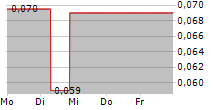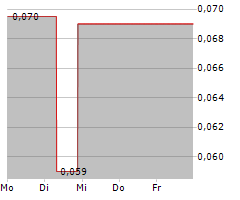Vancouver, British Columbia--(Newsfile Corp. - November 19, 2025) - Altamira Gold Corp. (TSXV: ALTA) (FSE: T6UP) (OTCQB: EQTRF), ("Altamira" or the "Company") is pleased to report assay results from recent reconnaissance drill holes at the Morro Verde target, located within the Company's Cajueiro District area, Brazil.
Highlights:
- Reconnaissance drill testing of a gold-in-soil anomaly associated with broad sericite alteration at the Morro Verde target (Figure 2), located 1.5km north of the Cajueiro Central mineral resource has intersected a new zone of gold mineralization associated with an altered quartz porphyry intrusive. The host rocks are similar to those at the Maria Bonita mineral resource and the more recently discovered mineralization at Tavares Norte prospect, 1.5km to the west of Morro Verde.
- Drill hole MRV003 intersected 8m @ 3.5 g/t gold from 176m depth, including 1m @ 15.4 g/t gold, indicating potential for higher grade mineralization.
- The gold mineralization is associated with potassic alteration of an interpreted quartz porphyry intrusive with associated A and B type quartz veining. There is strong sericite alteration overprinted on the earlier potassic alteration.
- This is the first intercept of high-grade gold associated with altered porphyritic host rocks in the district and the 7th highest grade intercept (grade x length) in over 22km of drilling at Cajueiro to date.
- A second drill rig is now operating at the Cajueiro mineral resource1 to test extensions of known gold bearing structures and complete infill holes within the resource area.
CEO Mike Bennett commented; "The discovery of higher-grade gold in a new and previously unrecognized porphyritic intrusive body at Morro Verde significantly extends the corridor of interest that runs east from the Maria Bonita porphyry. Following the recent discovery of gold mineralization at Tavares Norte, we now have drill intercepts in two separate gold-mineralized porphyry intrusives over an east-west distance of 6.5km from the Maria Bonita mineral resource. Scout drilling has now intersected mineralized intrusives at the first two of our eight district targets. The grade in the Morro Verde intercept is particularly encouraging as it confirms the potential to find mineralization with a combination of grades and widths that could have economic potential for both open-pit and underground mining operations With two rigs on site, we will continue follow-up drilling of these two new discoveries while also advancing expansion drilling of the two mineral resources at Maria Bonita and Central gold deposits."
CAJUEIRO DISTRICT
The Cajueiro district is located approximately 75km NW of the town of Alta Floresta in the state of Mato Grosso (Figure 1) in central western Brazil. The project is easily accessible by road, lies on open farmland and has grid power and a local water supply. Cajueiro is the most advanced of the key projects that Altamira controls in the region (Figure1).
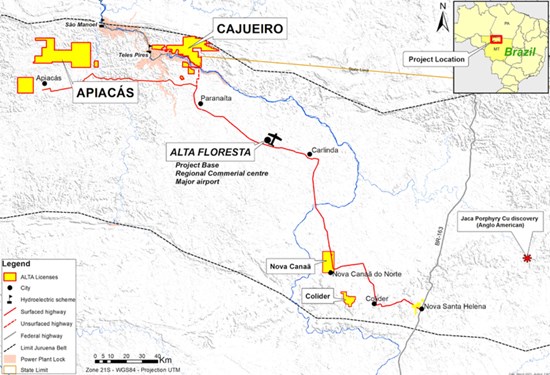
Figure 1: Location of Altamira Gold's projects in the Alta Floresta Belt.
To view an enhanced version of this graphic, please visit:
https://images.newsfilecorp.com/files/4500/275144_7926ee29143c480d_001full.jpg
The Cajueiro district consists of two independently estimated gold mineral resources at Cajueiro Central and Maria Bonita, plus a series of eight additional untested exploration targets within a radius of 8km of Cajueiro Central.
The Cajueiro Central area has a current open pit resource1 of 5.66Mt @ 1.02 g/t gold for a total of 185,000 oz in the Indicated Resource category and 12.66Mt @ 1.26 g/t gold for a total of 515,000 oz in the Inferred Resource category (estimated using a cut-off grade of 0.25g/t Au and a gold price of US$1,500/oz).
The Maria Bonita open-pit resource consists of Indicated Resources of 24.19Mt @ 0.46g/t gold (for a total of 357,800oz) and Inferred Resources of 25.64Mt @ 0.44g/t gold (for a total of 362,400oz)2. These resources were calculated using a 0.2 g/t gold cut-off grade and a gold price of US$2,780/oz. These resources include near-surface saprolite Indicated Resources of 2.02Mt @ 0.59g/t gold (38,000oz) and Inferred Resources of 0.68Mt @ 0.40g/t gold (8,700oz).
The Maria Bonita porphyry gold deposit forms part of a district-scale portfolio of prospects that are interpreted as having a similar geological origin (Figure 2). The Cajueiro area is characterized by a 15km stretch of former alluvial gold workings along the Teles Pires river. The source of some of this alluvial gold is related to a pronounced east-west corridor of gold anomalies in soils and rock chips and a set of sub-cropping intrusions extending east-west over 8km, implying the presence of a long-standing and deep-seated crustal structure.
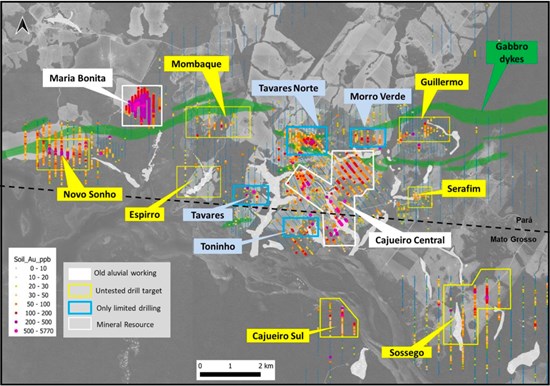
Figure 2: Cajueiro district mineral resources at Cajueiro Central and Maria Bonita (white labels) and prospects (blue labels with scout drilling, yellow labels not yet drilled). An alignment of six of the targets occur in close spatial association to a pronounced east-west fault corridor marked by later gabbroic dykes.
To view an enhanced version of this graphic, please visit:
https://images.newsfilecorp.com/files/4500/275144_7926ee29143c480d_002full.jpg
Morro Verde Drilling Update
The Morro Verde prospect is located 1.5km north of the Cajueiro Central resource area and 6.5km east of the Maria Bonita porphyry gold deposit (Figure 2). The prospect is defined by two separate gold-in-soil anomalies extending with values up to 178 ppb gold. Geological mapping has identified large areas of sericite alteration interpreted as associated with a hydrothermal system related to a causative concealed porphyry intrusive.
Previous surface rock chip grab sampling+ across the prospect returned grades of up to 5.2g/t gold in altered intrusive rocks (see press release dated September 02, 2025).
In the current scout drilling program, three widely spaced drill holes were completed at the target. The southern soil anomaly was tested by hole MRV003. An outcrop of veined and altered quartz porphyry coincides with the axis of the soil anomaly (Figure 3).
+ By their nature, grab samples are not representative of the bulk metal content of a mineralized zone.
This hole intersected porphyritic intrusive over 236m downhole (from surface). A discrete altered phase of quartz porphyry within this interval of quartz-felspar porphyry is associated with gold mineralization. A coherent interval of mineralization from 176m depth within the porphyry returned 8m @ 3.5 g/t gold, including 1m @ 15.4g/t gold (Figure 4). This zone is characterized by potassic alteration overprinted by later phyllic alteration, type A and B quartz veins and disseminated pyrite content (1.5-3% S). (Figure 5). This intercept lies approximately 300m north of the northern limit of the Cajueiro Central mineral resource (Figure 3).
Holes MRV001 and 002 targeted a separate surface grab rock sample+ anomaly in altered intrusive rocks (Figure 3). Hole MRV001was drilled entirely within a later sterile gabbro dyke that has no surface expression and returned no gold values. Hole MRV002 intersected 65m of quartz porphyry intrusive showing alteration but with little veining and no significant gold. The northern gold-in-soil anomaly with coincident phyllic alteration has been partially drill tested by a previous drill hole (CJO098) which intersected tuffs overlying altered intrusives. Further drill testing is pending on both of the gold-in-soil anomalies.
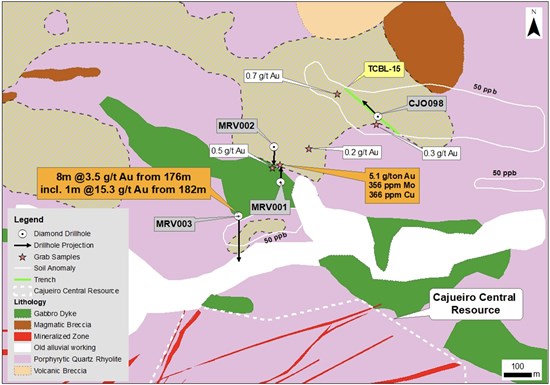
Figure 3: Morro Verde drill holes in relation to gold-in-soil anomalies and surface rock chip samples. The new intercept in MRV003 is located 300m north of the northern limit of the Baldo sector of the Cajueiro resource.
To view an enhanced version of this graphic, please visit:
https://images.newsfilecorp.com/files/4500/275144_7926ee29143c480d_003full.jpg

Figure 4: Cross section for drill hole MRV003. The mineralized interval correlates with altered intrusive rocks on surface within a gold-in-soil anomaly.
To view an enhanced version of this graphic, please visit:
https://images.newsfilecorp.com/files/4500/275144_7926ee29143c480d_004full.jpg
| Drill Hole | From | To | Width | Grade | |
| (m) | (m) | (m) | (g/t gold) | ||
| MRV003 | 176 | 184 | 8 | 3.5 | |
| Incl. | 182 | 183 | 1 | 15.3 | |
| EOH | 254.15 |
Table 1: Scout drill hole drill results Morro Verde prospect.
Notes to Table 1: The true width of the intersection is currently unknown. The hole was drilled as (HQ2) (67mm) to a depth of 17m and thereafter reduced to (NQ2) (51mm) to the end of the hole.
| Hole ID | Easting | Northing | Elevation (m) | Depth (m) | Azimuth (degrees) | Dip (degrees) |
| MRV001 | 548613 | 8965711 | 237 | 98.3 | 0 | -55 |
| MRV002 | 548597 | 8965840 | 237 | 90.2 | 180 | -55 |
| MRV003 | 548460 | 8965590 | 243 | 292.4 | 180 | -55 |
Table 2: Morro Verde drill hole collar locations.
Altamira now has two drill rigs operating at Cajueiro extending the current mineral resources at the Maria Bonita and Central resources. Further drilling is planned at Morro Verde and Tavares Norte to further delineate these respective porphyry systems and test for the continuity of the mineralized zones in MRV003 and TVN002 (press release October 29, 2025).
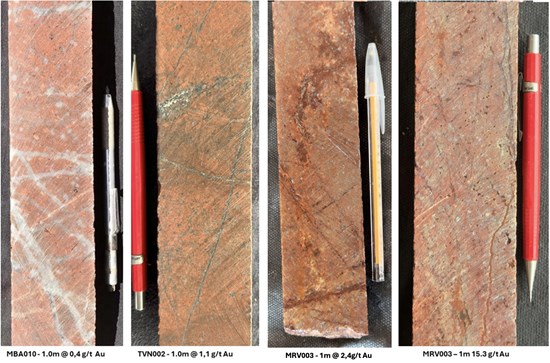
Figure 5: Comparison of textures in gold-mineralized porphyritic host rocks at Maria Bonita resource and both the Tavares Norte and Morro Verde prospects.
To view an enhanced version of this graphic, please visit:
https://images.newsfilecorp.com/files/4500/275144_7926ee29143c480d_005full.jpg
Cajueiro Central Resource Drilling Program
The Cajueiro Central mineral resource1 comprises several moderately dipping mineralized vein and breccia structures with orientations north-east to east and strike lengths up to 900m. The mineralized zones are up to 40m thick (true width). The deepest drill intercept to date within the mineral resource is 70m vertical below surface. The breccias are characterized by minor quartz fill accompanied by intense sericite alteration, pyrite and minor base metal sulphides and are interpreted as the mesothermal zone of mineralization associated with a porphyry centre, not yet identified. Grades are variable and are related, in part, to sulphide content.
A trial IP survey line conducted in 2023, demonstrated that the mineralized breccias are well defined by their chargeability profiles and further ground geophysics is planned to better delineate the full extent of the mineralization.
The current drill program aims to extend the resource laterally by testing extensions to the mineralized structures, defined by mapping and trenching. Depth extensions of the better mineralized sections will also be tested.
The 2019 mineral resource estimate has 27% of the contained gold in the Indicated category and 73% in the Inferred category. Infill drilling will be directed at moving more of the resource to the Indicated category to support early mining studies.
The drill program will also include collection of drill core for further metallurgical testing of the primary mineralization where prior tests delivered very promising gold recoveries of over 90% for both agitated leach extraction and a combination of gravity and agitated leach processes.
Qualified Person
Guillermo Hughes, FAIG and M Aus IMM., a consultant to the Company as well as a Qualified Person as defined by National Instrument 43-101, supervised and approved the preparation of the technical information in this news release.
About Altamira Gold Corp.
The Company is focused on the exploration and development of gold projects within western central Brazil, strategically advancing five projects spanning over 100,000 hectares within the prolific Juruena Gold Belt-an area that has historically yielded over 6 million ounces of placer gold3. The Company's advanced Cajueiro project contains two gold deposits. The central area comprises NI 43-101 resources of 5.66Mt @ 1.02 g/t gold for a total of 185,000 oz in the Indicated Resource category and 12.66Mt @ 1.26 g/t gold for a total of 515,000oz in the Inferred Resource category. In addition, the Maria Bonita gold deposit comprises additional open pit Indicated Resources of 24.19Mt @ 0.46g/t for a total of 357,800oz, and Inferred Resources of 25.64Mt @ 0.44g/t for a total of 362,400oz.
Ongoing exploration and fieldwork at Cajueiro indicate the presence of multiple porphyry gold systems, reinforcing its potential for district-scale development. These hard-rock gold sources align with historical alluvial gold production, highlighting the region's exceptional gold endowment and potential scalability. With two independently established mineral resources, a highly prospective geological setting and a track record of significant discoveries, the Company is well-positioned to unlock further value across its extensive land package.
1NI 43-101 Technical Report, Cajueiro Project, Mineral Resource Estimate: Global Resource Engineering, Denver Colorado USA, 10thOctober 2019; Authors K. Gunesch, PE; H. Samari, QP-MMSA; T. Harvey, QP-MMSA
2 NI43-101 Technical Report, Mineral Resource for the Maria Bonita Prospect: VMG Consultoria, Belo Horizonte, Minas Gerais, Brazil. 12th June 2025; Author V. Myadzel
3 Juliani, C. et al; Gold in Paleoproterozoic (2.1 to 1.77 Ga) Continental Magmatic Arcs at the Tapajós and Juruena Mineral Provinces (Amazonian Craton, Brazil): A New Frontier for the Exploration of Epithermal-Porphyry and Related Deposits. Minerals 2021, 11, 714. https://doi.org/10.3390/min11070714
On Behalf of the Board of Directors,
ALTAMIRA GOLD CORP.
"Michael Bennett"
Michael Bennett
President & CEO
Tel: 604.676.5661
Toll-Free:1-833-606-6271
info@altamiragold.com
www.altamiragold.com
Neither TSX Venture Exchange nor its Regulation Services Provider (as that term is defined in policies of the TSX Venture Exchange) accepts responsibility for the adequacy or accuracy of this release.
The securities described herein have not been registered under the U.S. Securities Act or any state securities laws, and may not be offered or sold in the United States absent registration or an applicable exemption from registration requirements under the U.S. Securities Act and any applicable state securities laws.
Forward-looking Statements
Certain information contained herein constitutes "forward-looking information" under Canadian securities legislation. Forward-looking information includes, but is not limited to, statements with respect to the extension of the Warrants. Generally, forward-looking information can be identified by the use of forward-looking terminology such as "will", "intends" or variations of such words and phrases or statements that certain actions, events or results "will" occur. Forward-looking statements are based on the opinions and estimates of management as of the date such statements are made and they are subject to known and unknown risks, uncertainties and other factors that may cause the actual results to be materially different from those expressed or implied by such forward-looking statements or forward-looking information, including the receipt of all necessary regulatory approvals. Although management of the Company has attempted to identify important factors that could cause actual results to differ materially from those contained in forward-looking statements or forward-looking information, there may be other factors that cause results not to be as anticipated, estimated or intended. There can be no assurance that such statements will prove to be accurate, as actual results and future events could differ materially from those anticipated in such statements. Accordingly, readers should not place undue reliance on forward-looking statements and forward-looking information. The Company will not update any forward-looking statements or forward-looking information that is incorporated by reference herein, except as required by applicable securities laws.
Quality Assurance/Quality Control
Sample assay results are monitored through a quality control / quality assurance program that includes the insertion of blind certified reference materials (standards), blanks and field duplicate samples. Logging and sampling are completed at a secure Company facility located on site. Drill core is cut in half on site by a saw cut or slicer (in soft saprolite). Gold analysis has been conducted by SGS Geosol in Belo Horizonte, Brazil, using SGS method FAA505 (fire assay of 50g charge), with higher grade samples checked by FAA525. Analytical quality is monitored by certified references and blanks. Until dispatch, samples are stored under the supervision the Company's exploration office. The samples are couriered to the assay laboratory using a commercial contractor. Pulps are returned to the Company and archived. Drill holes results are quoted as down-hole length weighted intersections. Additional information regarding the Company data verification processes is set out in the NI 43-101 Technical Report, Maria Bonita Prospect, June 2025, which can be found on the Company's website.

To view the source version of this press release, please visit https://www.newsfilecorp.com/release/275144
SOURCE: Altamira Gold Corp.

